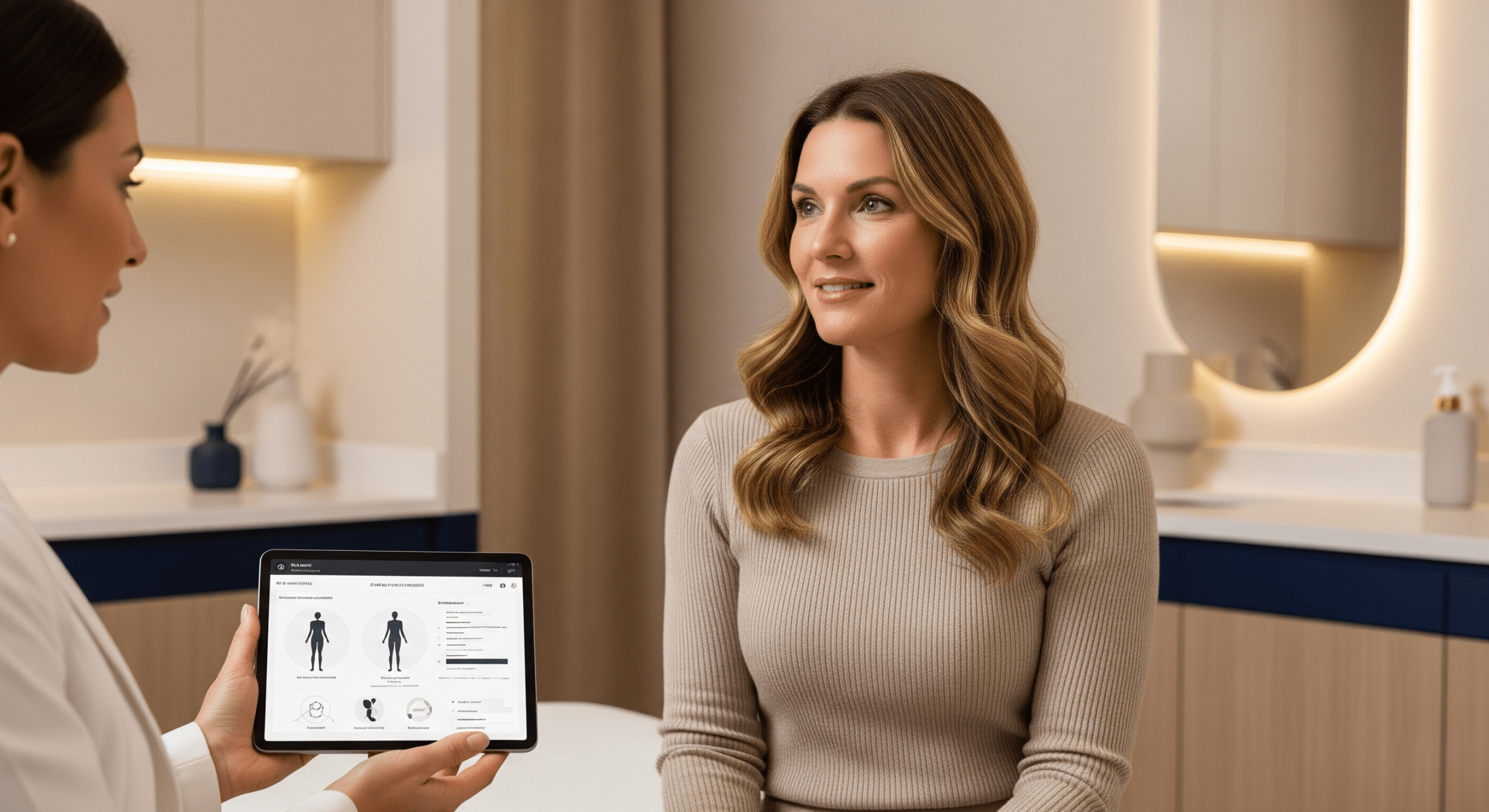The keto diet promises fat-burning results — but how do you know when your body is actually doing what it’s supposed to? The answer lies in understanding the signs you are in ketosis. From weird breath to laser focus, these signals aren’t random — they’re your body shifting gears from sugar-burning to fat-burning. Whether you’re new to keto or fine-tuning your approach, spotting these signs can tell you if you’re on the fast track to results — or stuck in neutral.
Jump To:
TLDR – Quick Guide
- What is ketosis? A metabolic state where your body burns fat for fuel instead of carbs.
- Main signs you are in ketosis: Bad breath, reduced appetite, increased energy, better focus, frequent urination, and measurable ketones.
- How long to get there? 2–7 days with strict carb restriction.
- Why it matters: Ketosis boosts fat loss, reduces cravings, and sharpens brain function.
- Where to go? Clinics like Mirabile MD support keto-friendly programs with medical oversight and personalized strategies.
Detailed Breakdown
What Is Ketosis, Exactly?
Ketosis is a natural metabolic state that happens when you reduce your carbohydrate intake drastically. With no sugar or starch to burn, your liver starts converting fat into ketones — an alternative energy source for your body and brain.
This shift can lead to:
- Accelerated fat loss
- Better blood sugar control
- Reduced inflammation
- Sharper mental focus
But before you start burning fat like a machine, your body has to transition — and those changes come with some telltale signs.
Top Signs You Are in Ketosis
1. Bad (or Strange) Breath
A common — and surprisingly reliable — sign. Ketones like acetone are excreted through your breath, giving it a fruity or metallic smell.
- Pro tip: sugar-free mints help without breaking ketosis.
2. Reduced Appetite
Ketones are natural appetite suppressants. Once you’re in ketosis, cravings drop and you may feel fuller longer — even with smaller meals.
- Translation: less snacking, more fat-burning.
3. Increased Energy and Mental Clarity
Once the “keto flu” passes, many people experience stable energy and focus. No more post-lunch crashes or carb fog.
- Perfect for powering through busy workdays or workouts.
4. Weight Loss
One of the biggest reasons people try keto. In ketosis, your body taps into stored fat for fuel — especially when paired with calorie control and movement.
- Expect both fat loss and water weight loss early on.
5. Frequent Urination
As glycogen stores are depleted, your body flushes out water — leading to more bathroom trips. It’s annoying, but normal.
- Stay hydrated and consider adding electrolytes.
6. Dry Mouth and Thirst
Your body excretes more fluid during ketosis, which can cause dry mouth or “cottonmouth.”
- Keep water (and electrolytes) close by.
7. Short-Term Fatigue (aka Keto Flu)
During the transition, you might feel tired, foggy, or irritable. This is your body adapting to a new fuel source.
- It usually lasts 1–3 days, and then the benefits kick in.
8. Digestive Changes
Some experience constipation or changes in bowel habits as their body adjusts to fewer carbs and more fat.
- Add fiber-rich veggies and stay hydrated.
How to Confirm You’re in Ketosis
If you want to go beyond the signs, try one of these:
- Urine ketone strips: Affordable, but not always accurate long-term.
- Breath analyzers: Measures acetone levels in breath.
- Blood ketone meters: Most accurate — tracks BHB (beta-hydroxybutyrate).
You’re typically in ketosis with BHB levels of 0.5 – 3.0 mmol/L.
How Long Does It Take to Get Into Ketosis?
Most people enter ketosis within 2–7 days of carb restriction (under 50g net carbs per day). Fasting, exercise, and clean eating help speed it up.
Things that can slow it down:
- Eating too many carbs or hidden sugars
- Too much protein (can convert to glucose)
- Stress and poor sleep (raises cortisol and blood sugar)
Why Work With a Provider Like Mirabile MD?
Going keto alone can be confusing — especially when your body has unique needs. At Mirabile MD, patients get medical support, custom nutrition plans, and lab testing to guide safe, effective fat loss through ketosis. Whether you’re dealing with insulin resistance, hormone imbalances, or just want expert-level support, their team builds a plan that fits your life — not a one-size-fits-all keto approach.
Key Takeaways
- Ketosis happens when your body burns fat instead of carbs — and it shows up in signs like better energy, less hunger, and weight loss.
- Common signs include bad breath, mental clarity, appetite control, and frequent urination.
- It usually takes 2–7 days of strict carb restriction to enter ketosis.
- Tools like ketone meters can help you confirm you’re in the fat-burning zone.
- Mirabile MD offers professional guidance to help you use ketosis safely and effectively for lasting results.
FAQs
1. How do I know I’m in ketosis without testing?
Look for signs like fruity breath, reduced appetite, increased energy, and frequent urination. These signals typically appear within a few days of carb restriction.
2. Is bad breath in ketosis permanent?
No — it’s most noticeable early on and often fades as your body adapts. Staying hydrated and using natural breath fresheners helps manage it.
3. How many carbs can I eat and stay in ketosis?
Most people stay in ketosis at 20–50g of net carbs per day. Your exact threshold may vary based on activity, metabolism, and body composition.
4. Can I enter ketosis without doing the keto diet?
Yes — intermittent fasting and low-carb eating can trigger mild ketosis. However, sustained fat-burning typically requires a structured keto plan.
5. Is ketosis safe long-term?
For most people, yes — especially when guided by a healthcare provider. Mirabile MD offers medically supervised keto support to ensure balanced, safe results over time.








